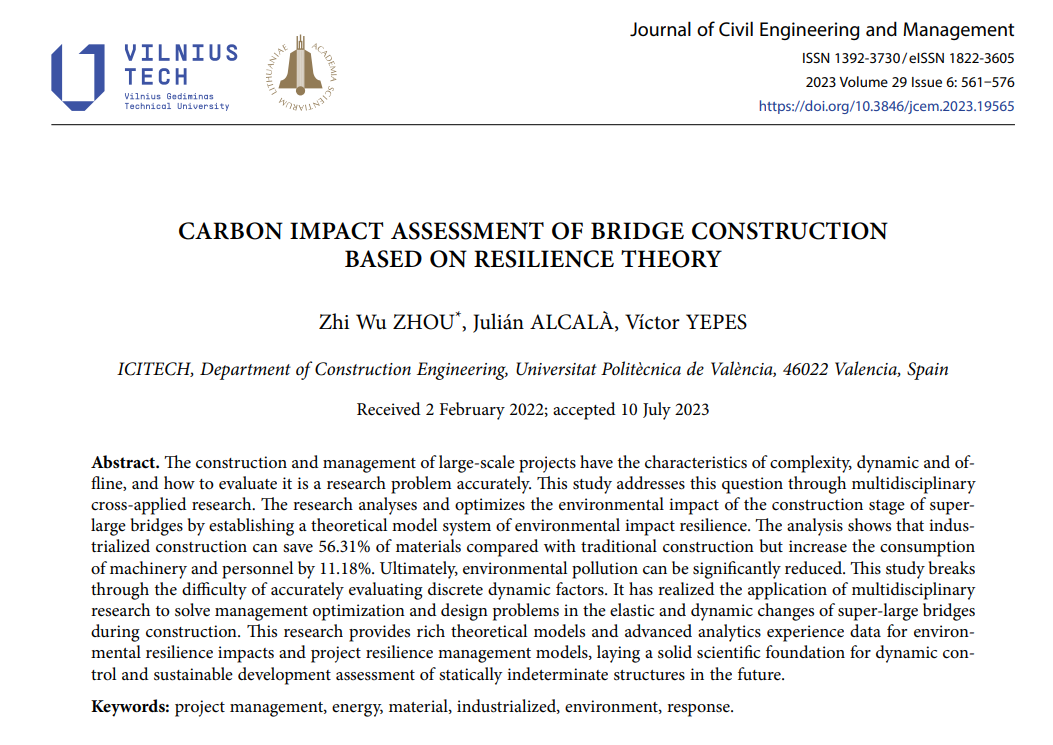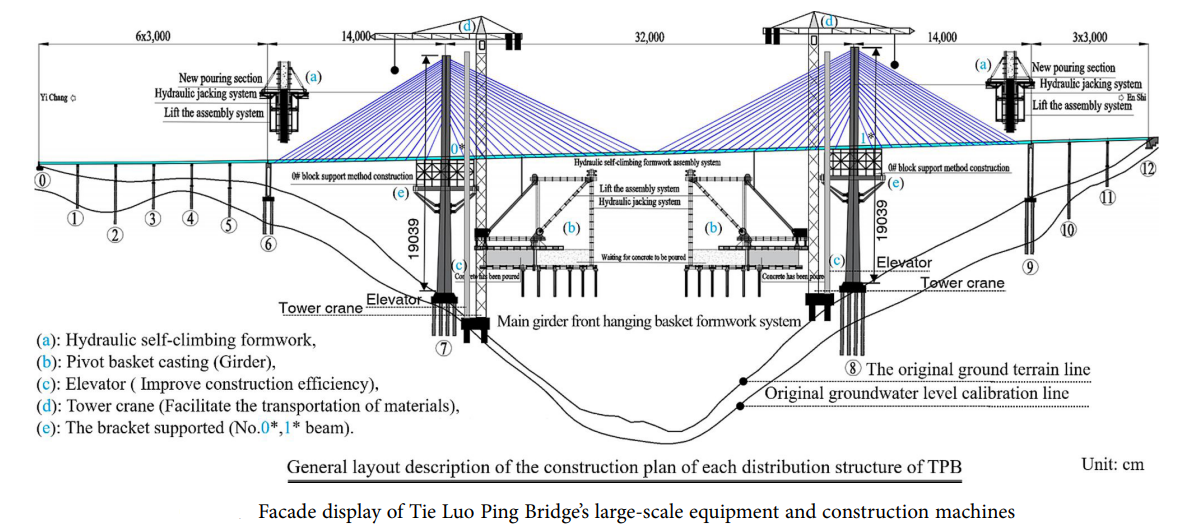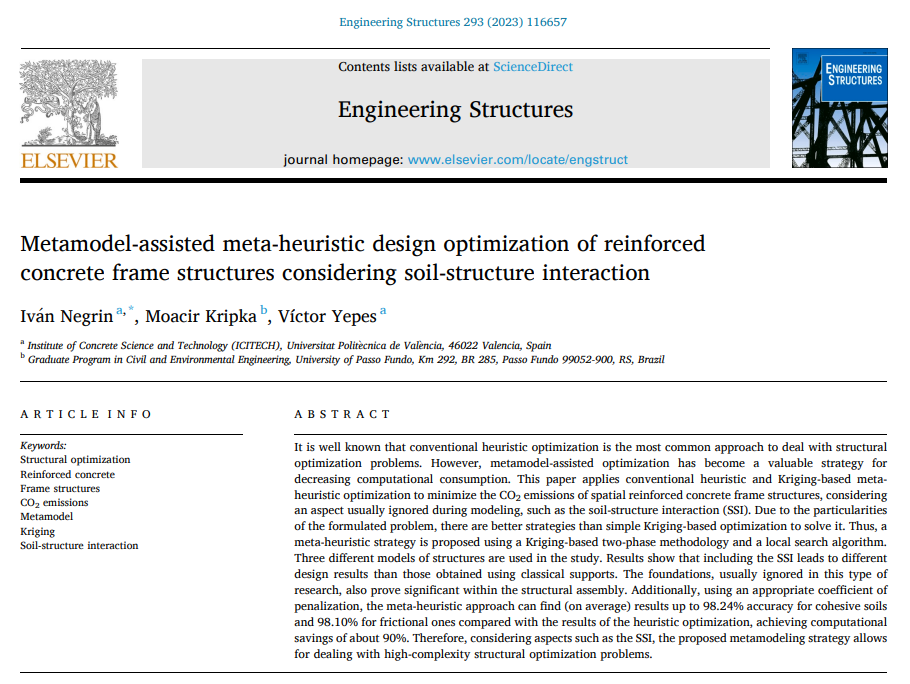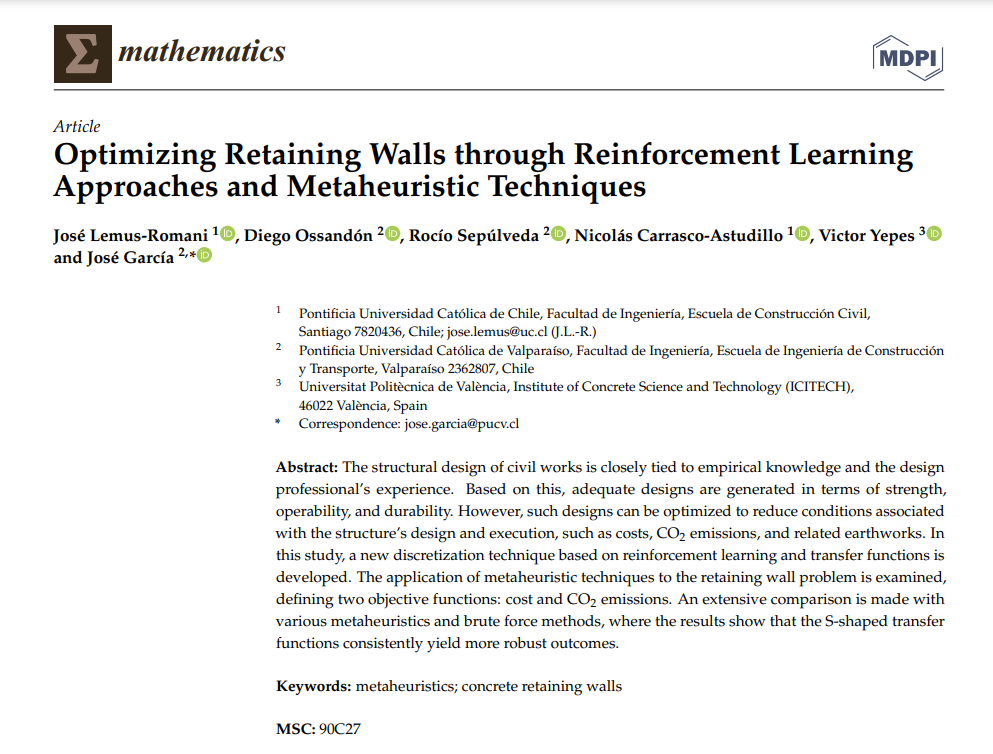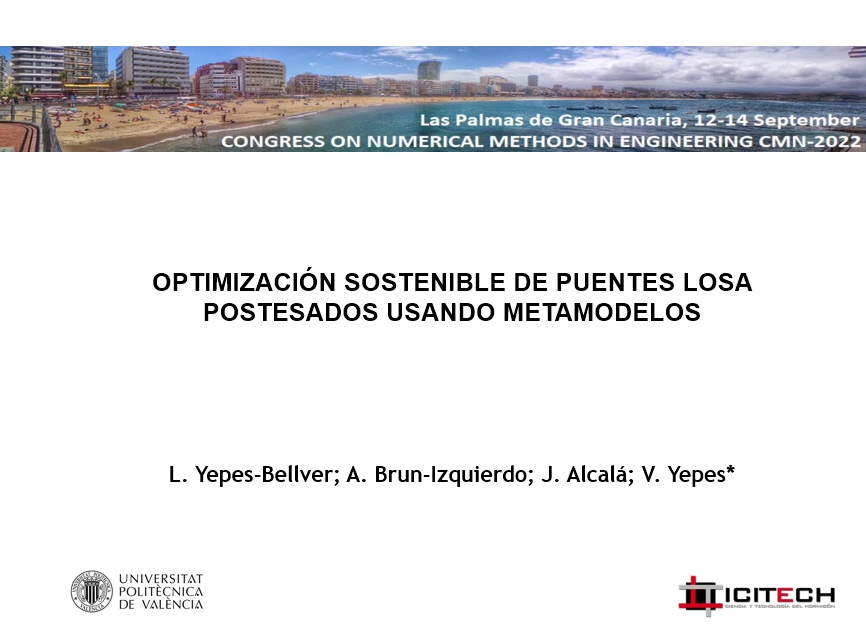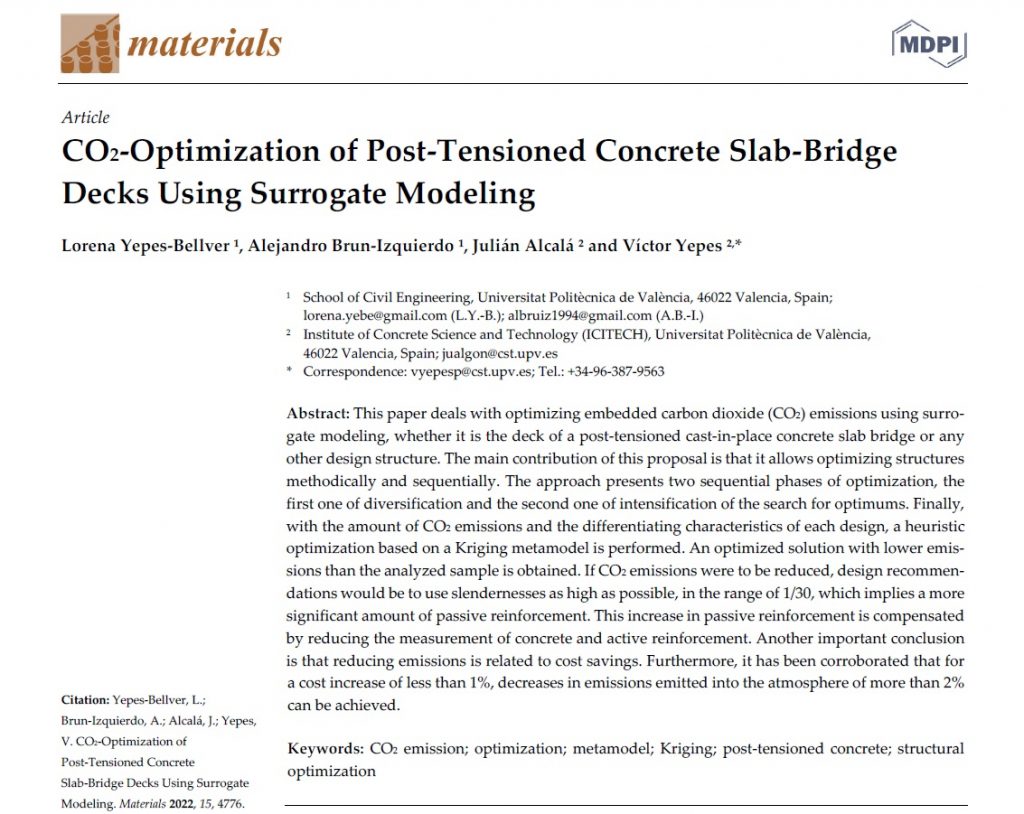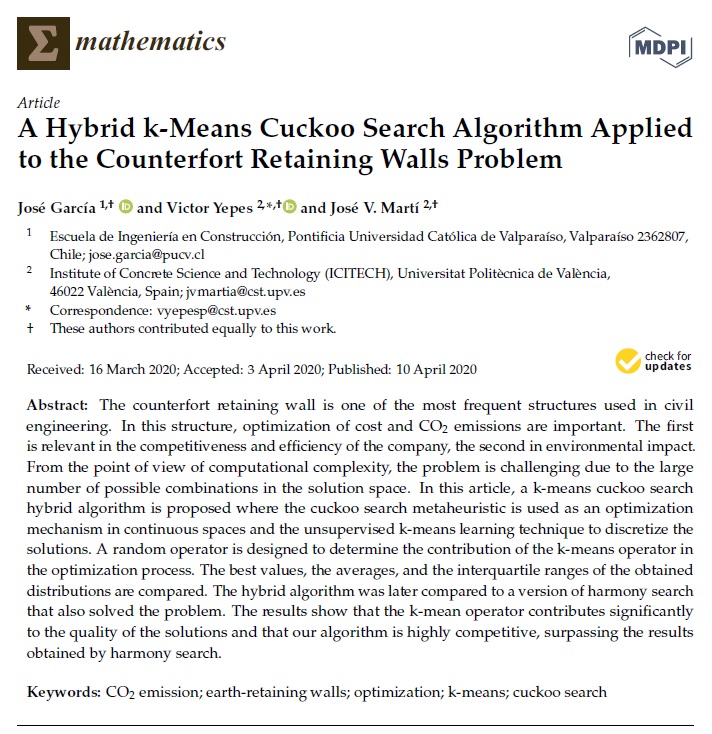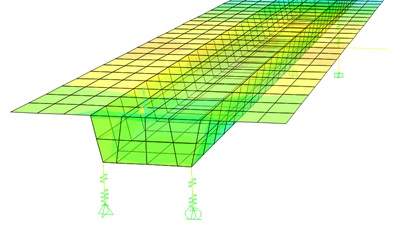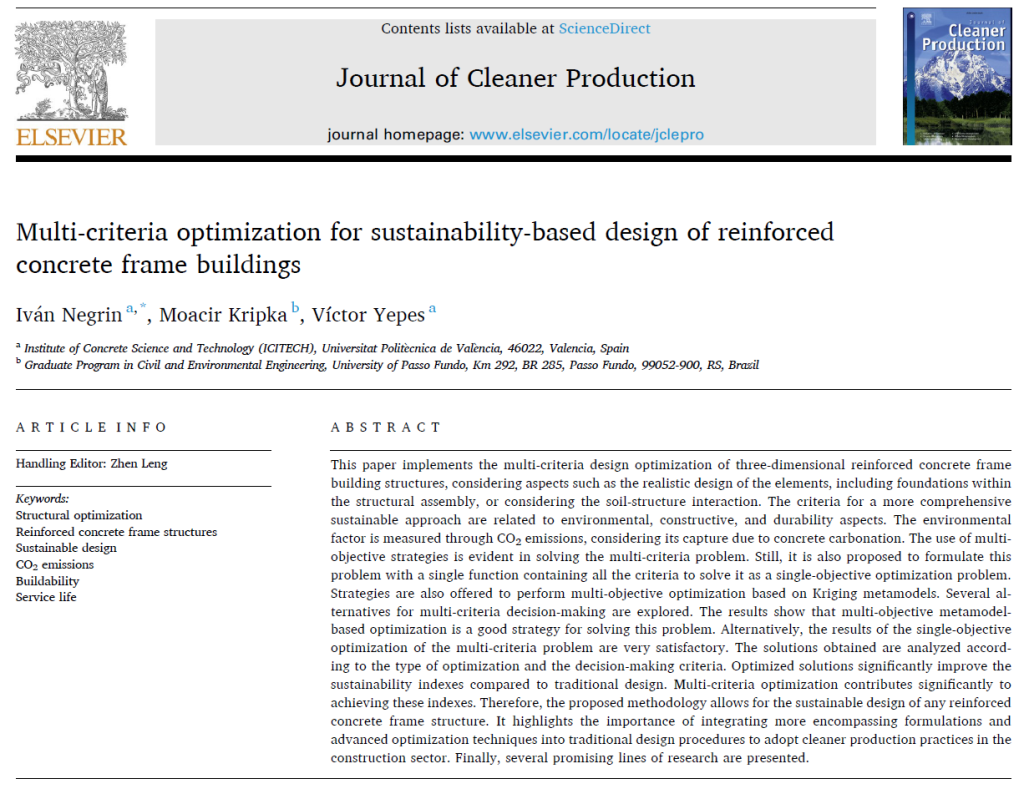 Acaban de publicarnos un artículo en el Journal of Cleaner Production, revista indexada en el primer decil del JCR. El trabajo se centra en la optimización del diseño multicriterio de los edificios con estructura de hormigón armado, teniendo en cuenta aspectos como el diseño eficiente, los factores ambientales (emisiones de CO₂) y la durabilidad. Explora las estrategias de optimización multiobjetivo y de un solo objetivo, así como el uso de los metamodelos de Kriging.
Acaban de publicarnos un artículo en el Journal of Cleaner Production, revista indexada en el primer decil del JCR. El trabajo se centra en la optimización del diseño multicriterio de los edificios con estructura de hormigón armado, teniendo en cuenta aspectos como el diseño eficiente, los factores ambientales (emisiones de CO₂) y la durabilidad. Explora las estrategias de optimización multiobjetivo y de un solo objetivo, así como el uso de los metamodelos de Kriging.
Los resultados muestran que tanto los enfoques de optimización multiobjetivo como los de un solo objetivo producen soluciones satisfactorias, lo que mejora significativamente los índices de sostenibilidad en comparación con el diseño tradicional. La metodología propuesta destaca la importancia de integrar técnicas de optimización avanzadas en los procedimientos de diseño tradicionales para promover prácticas de producción más limpias en el sector de la construcción.
Cabe destacar que la metodología propuesta mejora significativamente los índices de sostenibilidad en comparación con el diseño tradicional, lo que destaca la importancia de integrar técnicas de optimización avanzadas en los procedimientos de diseño tradicionales para promover prácticas de producción más limpias en el sector de la construcción.
El trabajo se enmarca dentro del proyecto de investigación HYDELIFE que dirijo como investigador principal en la Universitat Politècnica de València. Es fruto de la tesis doctoral en marcha de Iván Negrín (Cuba), que tengo el placer de codirigir con el profesor Moacir Kripka (Brasil).
Abstract:
This paper implements the multi-criteria design optimization of three-dimensional reinforced concrete frame building structures, considering aspects such as the realistic design of the elements, including foundations within the structural assembly, or considering the soil-structure interaction. The criteria for a more comprehensive sustainable approach are related to environmental, constructive, and durability aspects. The environmental factor is measured through CO2 emissions, considering its capture due to concrete carbonation. The use of multi-objective strategies is evident in solving the multi-criteria problem. Still, it is also proposed to formulate this problem with a single function containing all the criteria to solve it as a single-objective optimization problem. Strategies are also offered to perform multi-objective optimization based on Kriging metamodels. Several alternatives for multi-criteria decision-making are explored. The results show that multi-objective metamodel-based optimization is a good strategy for solving this problem. Alternatively, the results of the single-objective optimization of the multi-criteria problem are very satisfactory. The solutions obtained are analyzed according to the type of optimization and the decision-making criteria. Optimized solutions significantly improve the sustainability indexes compared to traditional design. Multi-criteria optimization contributes significantly to achieving these indexes. Therefore, the proposed methodology allows for the sustainable design of any reinforced concrete frame structure. It highlights the importance of integrating more encompassing formulations and advanced optimization techniques into traditional design procedures to adopt cleaner production practices in the construction sector. Finally, several promising lines of research are presented.
Keywords:
Reference:
NEGRÍN, I.; KRIPKA, M.; YEPES, V. (2023). Multi-criteria optimization for sustainability-based design of reinforced concrete frame buildings. Journal of Cleaner Production, 425:139115. DOI:10.1016/j.jclepro.2023.139115
Os podéis descargar el artículo de forma gratuita hasta el 22 de noviembre de 2023 en esta dirección:
https://authors.elsevier.com/c/1hsHa3QCo9j26Q

